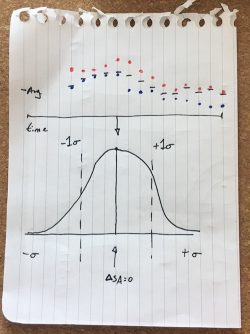What is mathematical literacy and what does it look like?

Mathematics is both a tool and a language.
Mathematical literacy is when one is able to use math to solve problems (in “real life”) and read mathematical statements (statistics, charts, equations) and understand what they are communicating.
A few awesome benefits of mathematical literacy:
- Mathematics is the foundation of objective and scientific truth.
- Mathematics is universal (i.e. it’s the same all over the world, transcends boundaries and spoken languages).
- It can be leveraged to counter some of our deepest cognitive and behavioral biases.
- It is a language that can be used to communicate truths from the natural world and the universe.
- It can be very beautiful.
- It can be very useful.
I wrote this post because I have gleaned tremendous understanding and fulfillment from the use of mathematics in my life and since I’ve become “fluent” (two years into college) I’m able to quickly sketch out mathematical ideas like the one above.
I use these mathematical ideas to understand concepts, design things, make art, find problems or solutions in my work, make, save, and invest money.
I have a lot to say about mathematical literacy. Unfortunately, it is very rare for educated individuals to be mathematically literate. Most educated individuals can do basic arithmetic and algebra, but this is like the equivalent of the alphabet and basic spelling in English class.
In a future post, I’ll talk a little more about our shortcomings in mathematical education and some ideas to spread mathematical literacy to a wider population.
You may also like:
